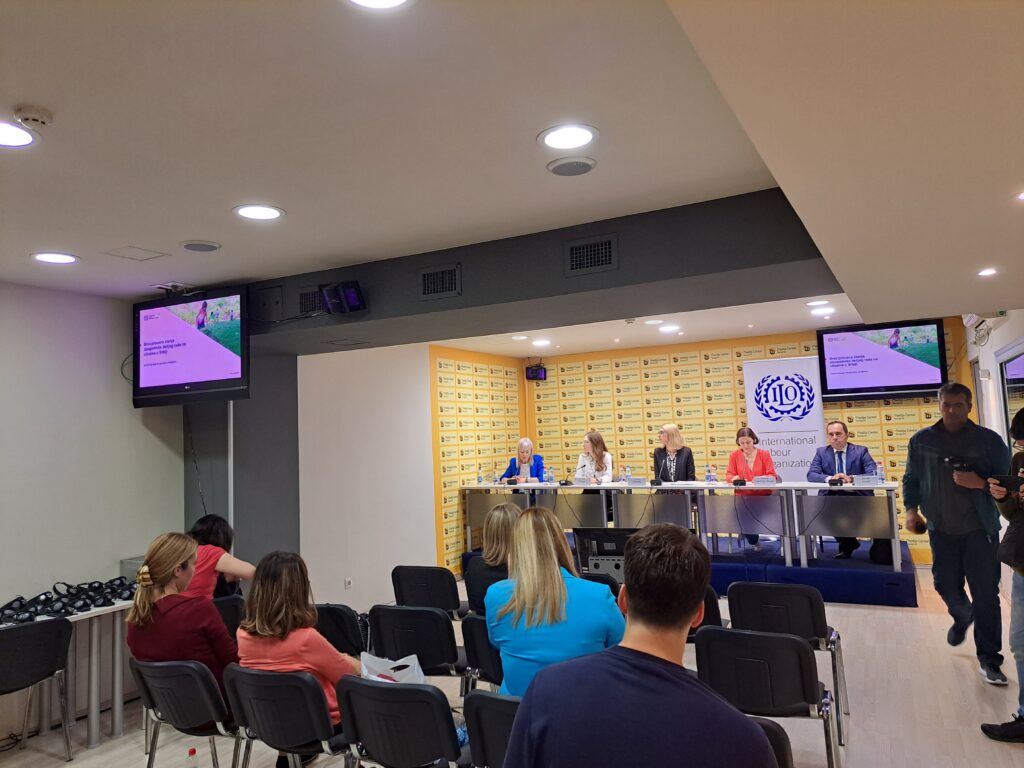On the occasion of the World Day Against Child Labor, observed on June 12th, the results of the 2021 Survey on Child Labor Abuse in Serbia, conducted by the Statistical Office of the Republic of Serbia, and the results of the research “Rapid Assessment of the Abuse of Child Labor on the Streets in Serbia”, conducted by the SeConS Development Initiative Group, were presented at the Media Center Belgrade.
Almost every tenth child in Serbia, or 9.5% of all children between the ages of 5 and 17, was exposed to child labor abuse in 2021, which is a total of about 82,000 children in Serbia. Child labor abuse is most widespread in non-urban areas, in agriculture, and in households where the head of the household has a lower level of education. This was indicated by the results of the Survey on Child Labor Abuse, conducted in Serbia for the first time in 2021 by the Statistical Office of the Republic of Serbia in cooperation with the International Labour Organization, on a representative sample of 2,325 households with 3,471 children aged 5 to 17.
21,000 children aged 15 to 17 (10.1% of all children in this age group) and 14,000 children aged 5 to 14 (2.2% of the total number of children in this age group) are exposed to hazardous work.
In all age groups, the rate of child labor abuse is higher among boys than among girls, and boys are also more likely to be exposed to hazardous work. As children get older, gender differences become more pronounced, so for children aged 15 to 17, the rate of child labor abuse among boys is more than twice as high as among girls (13.6% for boys vs 6.3% for girls).
From a regional point of view, child labor abuse is most prevalent in Šumadija and Western Serbia for all age groups, where as much as a quarter of children aged 12 to 14 were exposed to child labor abuse.
As shown by the results of the Survey on Child Labor Abuse, conducted by the Statistical Office of the Republic of Serbia, child labor abuse is more common in households with lower incomes. Children who were exposed to child labor abuse most often cite “support to family income” as a reason why they work – this was stated by 43.8% of children aged 5 to 17, and as much as 70% of children aged 15 to 17.
Abuse of child labor on the streets – begging, collecting secondary raw materials, offering services and goods in exchange for money, is recognized as a particular form of child labor abuse. Therefore, a qualitative research “Rapid Assessment of the Abuse of Child Labor on the Streets” was also conducted and implemented in the period from February to September 2022 by the SeConS Development Initiative Group.
The research included children from poor families who predominantly belong to the Roma national minority, who are financial beneficiaries, and where child labor appears as an additional way for families to get out of poverty and survive. Observations in the field showed that presence of children in both sexes and different age groups (from newborns carried by parents who are begging, to older teenagers) is equal; that children working independently or in groups without parental accompaniment are between 6 and 16 years old; and that they mostly work in groups (consisting of 2 to 11 members), while the adults are often around to supervise their work.
Children are engaged in work activities by parents and older brothers or sisters, but the examples of recruitment through peer networks have also been recorded. Apart from the fact that children are expected to contribute to the survival of the family, parents often believe that involving children in work is positive for children’s development and that it is a good educational practice.
According to the qualitative research “Rapid Assessment of the Abuse of Child Labor on the Streets”, one of the key consequences of children working on the streets is the neglect of education or early school drop-out.
Both pieces of research were conducted within the International Labour Organization’s project “Measurement, awareness-raising and policy engagement to accelerate action against child labor and forced labor” (MAP16), financially supported by the United States Department of Labor.

